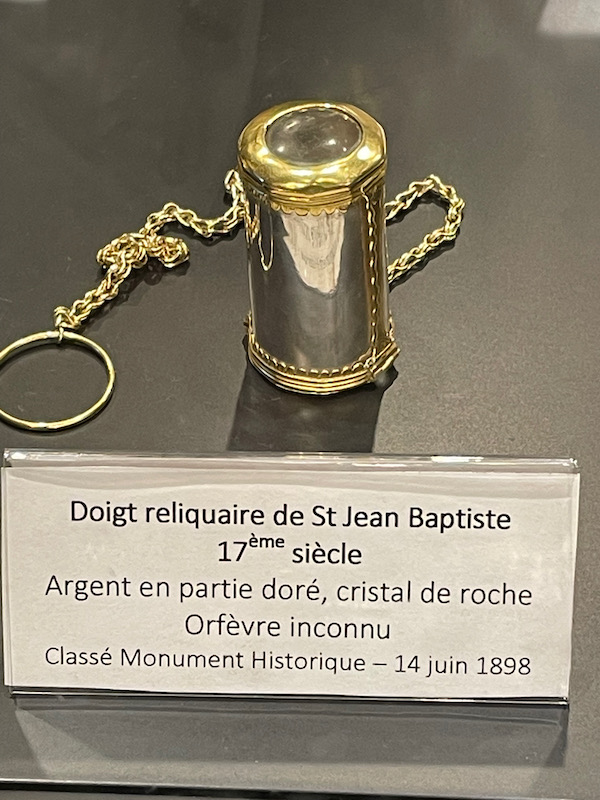Our Blog - Enclos Paroissial of Saint-Jean-du-Doigt
The name of the town, and the enclos, comes from the supposed relic of the anterior phalanx of the index finger of the right hand of Saint John the Baptist. According to legend, a young man brought back the finger to the town of Plougasnou in 1437, which was then "authenticated" by the Duke of Brittany. In 1489, the English pillaged the town and took the finger of the saint, but it miraculously returned to the town. There are multiple pilgrimages documented, including Duchess Anne of Brittany in 1505, who had eye problems. The Bishop of Nantes touched the relic to her eyes and she was cured. She then donated money to complete the construction of the church.
Here you can see the enclos, with the gateway and the wall, then the church inside the enclosure. There is also a cemetery, a fountain, and a funerary chapel. The 15th century Gothic church has a bad history with fires (3 of them) but thankfully, most of the important artifacts inside the church were saved. The triumphal arch is one of the oldest (and the information on the church says it is also the finest one) in Lower Brittany. There is a carved fountain from 1691 and a calvary (cross) from 1877. The oratory (from 1577) is an example of Breton Renaissance architecture.
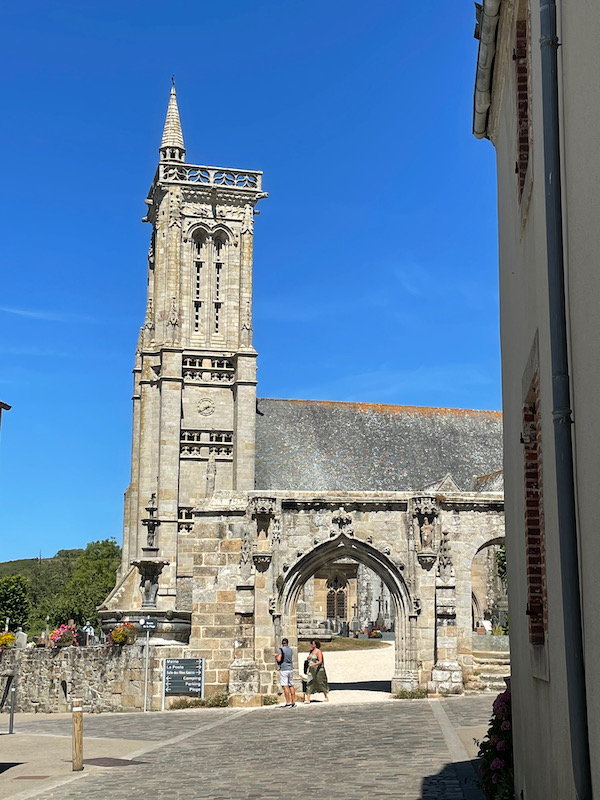
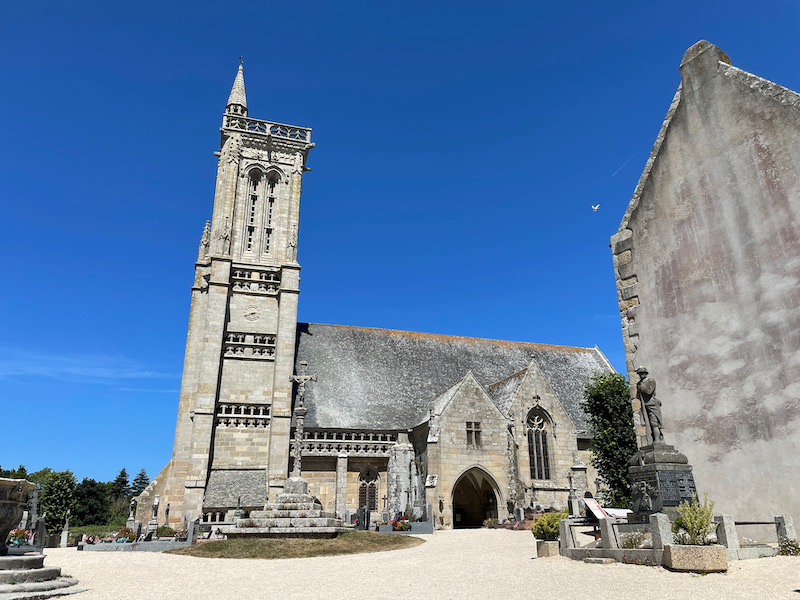
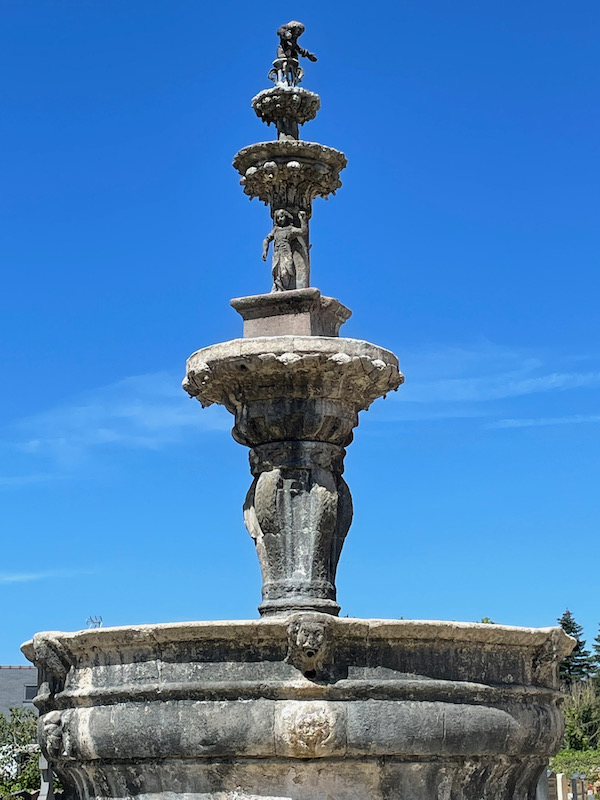
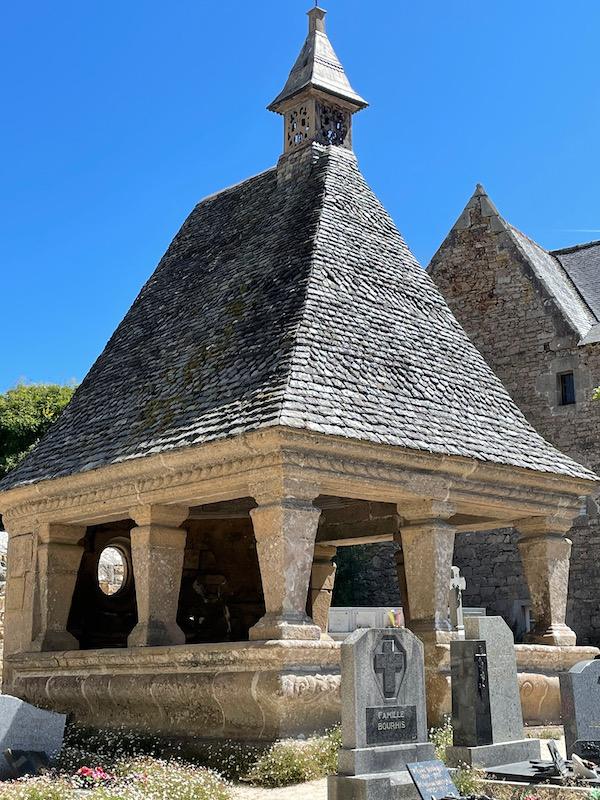
Typical of the churches we've seen lately, it has a nave and 2 side aisles but no side chapels. The ceiling is very tall and made of wood (but not painted).
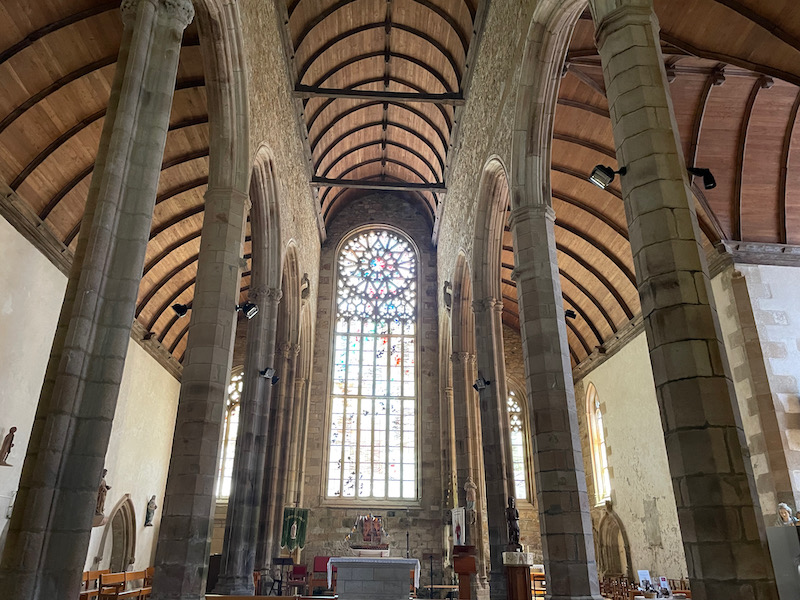
The huge stained-glass window behind the high altar was done in 1990, and features the Transfiguration, the Tree of Jesse, and the Apocalypse.
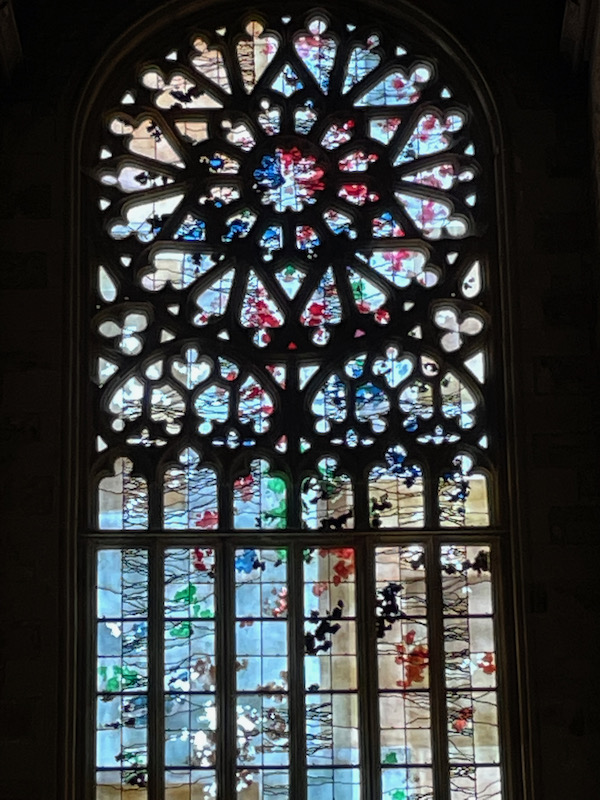
Now for the really important (but very small) relic ... this is supposedly a bone from the finger of St John the Baptist. It is housed in a gold and silver reliquary that was created in the 17th century.
